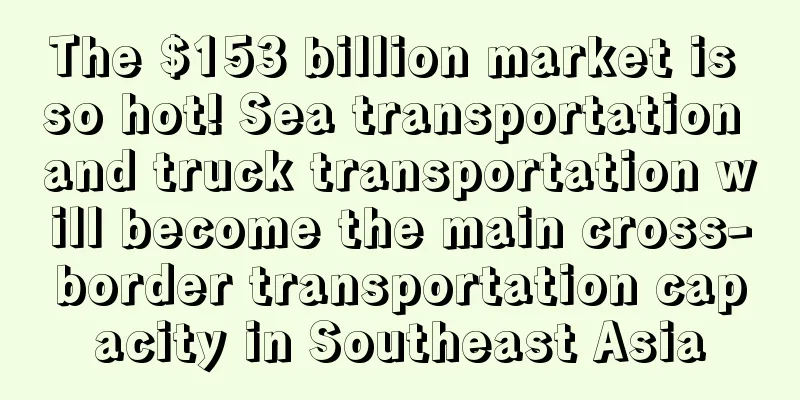The $153 billion market is so hot! Sea transportation and truck transportation will become the main cross-border transportation capacity in Southeast Asia

|
The COVID-19 pandemic has accelerated online spending in the region, with the market expected to reach $153 billion in sales by 2025, according to regional e-commerce logistics company J&T Express. This was a prediction made before the pandemic, and as online shopping for goods continues to expand, J&T predicts that more goods will shift to ocean freight. This shift will be driven primarily by consumers purchasing larger items and pressure on merchants to reduce shipping costs. Such drives will become even more relevant with the recent announcement that low-value goods purchased online and imported (to Singapore) by air or post will be subject to Goods and Services Tax (GST) from January 1, 2023. It is understood that J&T also has operations in Malaysia , Vietnam , the Philippines , Thailand , Cambodia and China. Since its establishment in 2015, its business has grown by 300% annually and it claims to be one of the fastest growing e-commerce logistics companies in these regions . J&T believes that sea freight is becoming the main mode of transport in Southeast Asia , as anywhere beyond this will require longer delivery times. In response to this shift, J&T ’s infrastructure and systems are seeking ways to better integrate retail , trade and logistics processes to support ocean shipping as a key link in the cross-border e-commerce supply chain. However, in the current global shipping environment, the shortage of containers has had a significant impact on it , thereby pushing up the cost of completing cross-border e-commerce transportation. In 2021, with the resumption of air cargo, the pressure on sea freight may be reduced. On the other hand , due to the reduction in air cargo volume, some freight forwarders in Southeast Asia have also increased their freight volume to cross-border truck transportation . For e-commerce , the use of road freight in Southeast Asia is somewhat limited compared to Europe , due to "customs clearance issues between different countries in Asia." However, it cannot be ignored that there is a certain growth trend in cross-border truck transportation throughout Asia, and cross-border business in these countries is also favored due to lower transportation costs and relatively short delivery times. There is also the recently launched ASEAN Customs Transit System , which many cross-border e-commerce players hope will improve the efficiency of cross-border truck transport. logistics Cross-border e-commerce market Southeast Asia |
<<: Malaysia Airlines passenger traffic still down, cargo traffic continues to climb
>>: Online GMV reaches $6.7 billion, Best Buy accelerates omni-channel transformation
Recommend
Smart electronic devices, accessories, and more are hot sellers in Mexico!
In the Latin American market, in addition to Braz...
What is quickcep? quickcep Review, Features
quickcep was founded in 2021. Based on the self-de...
Profits reduced by one-third! Amazon takes action against sellers’ self-delivery services
As Amazon faces the possibility of an antitrust l...
What is cmpanda? cmpanda Review, Features
cmpanda connects and integrates Southeast Asian e-...
Amazon seller received 13 customer complaints in one day: Are we being pranked?
Recently, a seller posted on a forum that he had ...
A surge of 638%! Foldable phones are popular in the Indian market
In recent years, the functions of smartphones hav...
TEMU occupies 17% of the US retail industry
In just over a year since its launch, Temu has go...
What is markāi 马开? markāi 马开Review, Features
markāi focuses on acquiring and developing high-q...
What is IE Browser? IE Browser Review, Features
Jinglian Browser is an anti-association browser fo...
What is apilo? apilo Review, Features
Formerly ErpBox, apilo is a platform for managing...
What is Tongling Yanzu Culture Communication Co., Ltd.? Tongling Yanzu Culture Communication Co., Ltd. Review, Features
Tongling Yanzu Culture Communication Co., Ltd. is ...
What is threegemstea? threegemstea Review, Features
threegemstea is dedicated to a tea break that is r...
At the age of 22, he started to "go overseas", and within half a year, he sold 1.4 million US dollars a month in Europe.
In the past, when we mentioned 3C, what came to m...
Looking at the future product selection direction of the US market from the consumption trends in the post-epidemic era
According to Jungle Scout's latest consumer t...
Brexit brings new opportunities to the European market, and it’s the right time for cross-border sellers to enter the market!
It has been a month since the UK officially left ...









